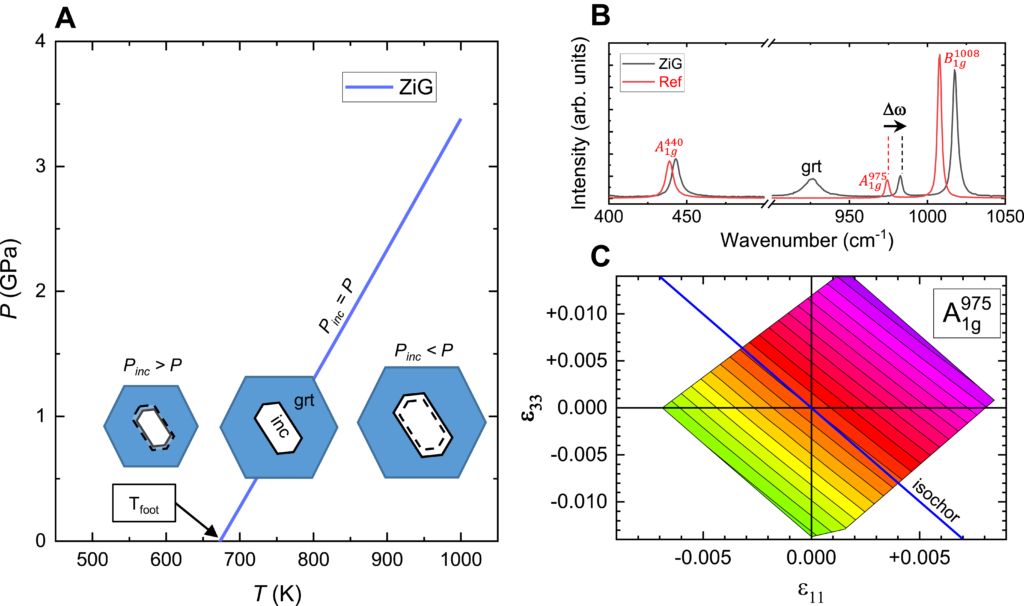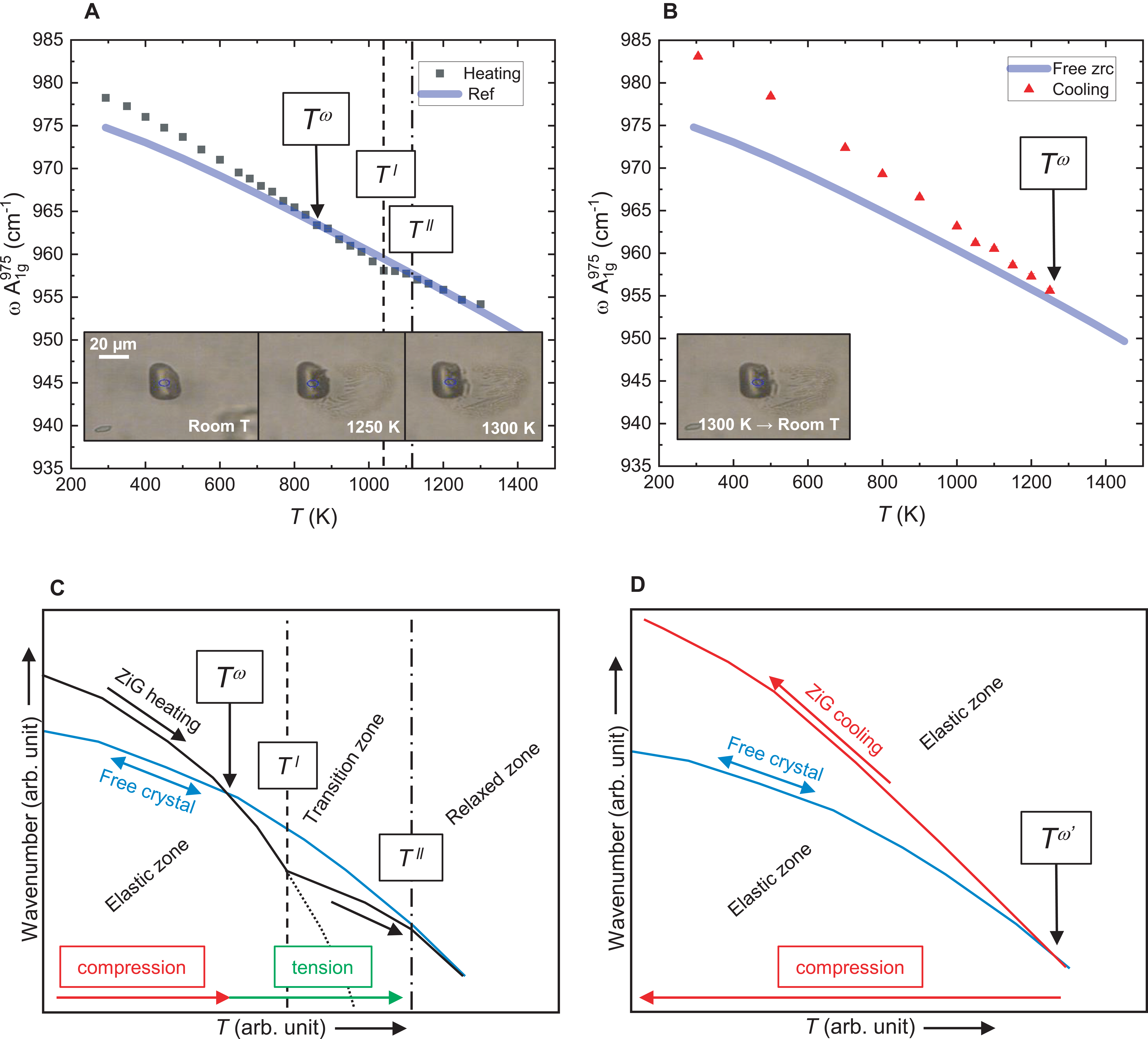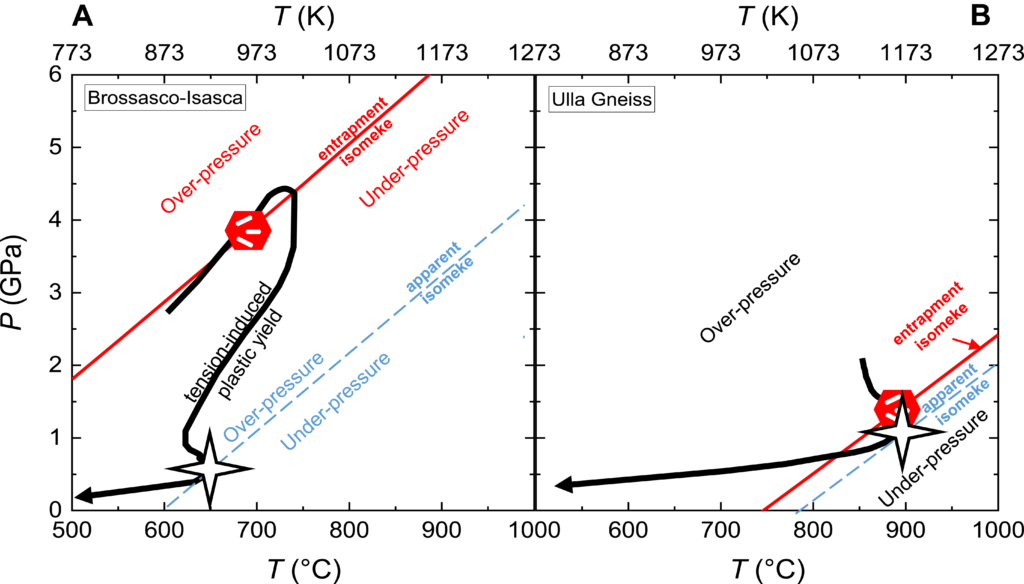Resetting of zircon inclusions in garnet: Implications for elastic thermobarometry
“Elastic thermobarometry of host-inclusion systems for back-calculating pressure (P) and temperature (T) conditions of inclusion entrapment relies on the assumption that the host-inclusion rheology is purely elastic. In this study, we have explored both the elastic and non-elastic behavior of zircon-in-garnet (ZiG) systems by in situ Raman spectroscopy at high T and ambient P.

We show that upon heating, plastic relaxation takes place immediately after the zircon inclusions experience tensile stress conditions with respect to a free crystal at the same T. On subsequent cooling, the inclusions develop a new stress state, and thus the inclusion pressures have been reset from those corresponding to their original entrapment. Resetting of inclusion pressures therefore strongly depends on the exhumation P-T path.

This explains why elastic thermobarometry using ZiG systems is reliable when applied to low-P high-T rocks where the cooling path after inclusion entrapment passes quickly into the compression domain of the inclusion. On the other hand, high-P rocks exhumed along quasi-isothermal paths take zircon inclusions into the tensile domain where they are reset until significant cooling commences at low P. ZiG systems in ultrahigh-P rocks therefore commonly indicate pressures on clockwise exhumation paths instead of the conditions of original entrapment. “

If you want to know more please download our manuscript Campomenosi et al Geology (2023) 51 (1): 23–27
